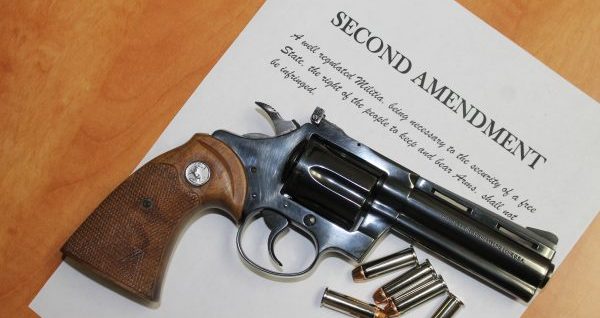
The European Union is reportedly tightening its gun-tracing rules “to better track the estimated 35 million illegal firearms in civilian hands across the bloc and put a stop to terror and gang violence,” Politico is reporting.
But does gun-tracing work when the authorities are admittedly trying to track “illegal firearms?”
According to Newsmax, “Negotiators from the European Parliament and Council sealed a deal Thursday that will create a central database for gun-makers and dealers.”
A news release from the European Council states, “Firearms types are defined as Category A, B or C. Category A firearms are generally prohibited, Category B firearms need an authorisation, and owners of Category C firearms need to declare their ownership but do not need authorisation.”
Newsmax noted the restrictions will not apply to military or police firearms.
“Tighter restrictions won’t apply to military or police firearms,” Newsmax said. “But by 2028, all member countries should either start using the EU database or fold their existing system into it.”
No country in Europe has anything equivalent to the United States’ Second Amendment or any of the 40-plus state right-to-bear-arms state constitutional provisions. Owning firearms is strictly regulated across Europe.
Part of the “reform” adopted by the EU council will be an annual report detailing firearms import and export figures provided by the European Commission.
According to a Background provided by the European Councl, “It is estimated that 35 million illicit firearms were owned by civilians in the EU in 2017. This would correspond to 56% of the estimated total of firearms.
“The current firearms regulation lays down rules on exporting firearms, their parts and components, and ammunition,” the document continues. “It implements Article 10, which deals with imports, exports and transit of firearms, of the United Nations Protocol against the Illicit Manufacturing of and Trafficking in Firearms, their Parts and Components and Ammunition. The current regulation in force since 2012 does not apply to antique or deactivated firearms, or to firearms intended for military or police use.
“The regulation is complemented by an existing Firearms directive that defines minimum common rules on the acquisition and possession of firearms in the EU, as well as on the transfer of firearms from one EU country to another.”
U.S. critics of European gun control contend increased regulation of firearms will ultimately provide governments with records about who owns guns, making it easier to confiscate those arms.”
A statement from the European Council insists, “The new rules aim to close the loopholes for firearms trafficking, while facilitating trade and movement of firearms used for legitimate purposes.”